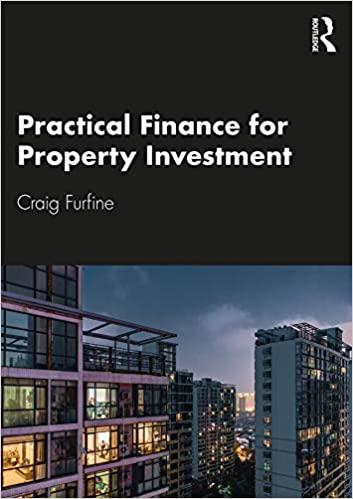Question
Gardial Fisheries is considering two mutually exclusive investments. The projects' expected net cash flows are as follows: Expected Net Cash Flows Time Project A Project
Gardial Fisheries is considering two mutually exclusive investments. The projects' expected net cash flows are as follows: Expected Net Cash Flows Time Project A Project B 0 ($375) ($575) 1 ($300) $190 2 ($200) $190 3 ($100) $190 4 $600 $190 5 $600 $190 6 $926 $190 7 ($200) $0 a. If each project's cost of capital is 12%, which project should be selected? If the cost of capital is 18%, what project is the proper choice? @ 12% cost of capital @ 18% cost of capital Use Excel's NPV function as explained in this chapter's Tool Kit. Note that the range does not include the costs, which are added separately. WACC = 12% WACC = 18% NPV A = NPV A = NPV B = NPV B = At a cost of capital of 12%, Project A should be selected. However, if the cost of capital rises to 18%, then the choice is reversed, and Project B should be accepted. b. Construct NPV profiles for Projects A and B. Before we can graph the NPV profiles for these projects, we must create a data table of project NPVs relative to differing costs of capital. Project A Project B 0% 2% 4% 6% 8% 10% 12% 14% 16% 18% 20% 22% 24% 26% 28% 30% c. What is each project's IRR? We find the internal rate of return with Excel's IRR function: IRR A = Note in the graph above that the X-axis intercepts are equal to the two projects' IRRs. IRR B = d. What is the crossover rate, and what is its significance? Cash flow Time differential 0 1 2 Crossover rate = 3 4 "The crossover rate represents the cost of capital at which the two projects value, at a cost of capital of 13.14% is: have the same net present value. In this scenario, that common net present" 5 6 7 e. What is each project's MIRR at a cost of capital of 12%? At r = 18%? Hint: note that B is a 6-year project. @ 12% cost of capital @ 18% cost of capital MIRR A = MIRR A = MIRR B = MIRR B = f. What is the regular payback period for these two projects? Project A Time period 0 1 2 3 4 5 6 7 Cash flow (100) 600 600 926 (200) $0 $0 $0 Cumulative cash flow Intermediate calculation for payback Payback using intermediate calculations Project B Time period 0 1 2 3 4 5 6 7 Cash flow Cumulative cash flow Intermediate calculation for payback Payback using intermediate calculations Payback using PERCENTRANK Ok because cash flows follow normal pattern. g. At a cost of capital of 12%, what is the discounted payback period for these two projects? WACC = 12% Project A Time period 0 1 2 3 4 5 6 7 Cash flow Disc. cash flow Disc. cum. cash flow Intermediate calculation for payback Payback using intermediate calculations Project B Time period 0 1 2 3 4 5 6 7 Cash flow Disc. cash flow Disc. cum. cash flow Intermediate calculation for payback Payback using intermediate calculations Discounted Payback using PERCENTRANK Ok because cash flows follow normal pattern. h. What is the profitability index for each project if the cost of capital is 12%? PV of future cash flows for A: PI of A: PV of future cash flows for B: PI of B:
Step by Step Solution
There are 3 Steps involved in it
Step: 1

Get Instant Access to Expert-Tailored Solutions
See step-by-step solutions with expert insights and AI powered tools for academic success
Step: 2

Step: 3

Ace Your Homework with AI
Get the answers you need in no time with our AI-driven, step-by-step assistance
Get Started


